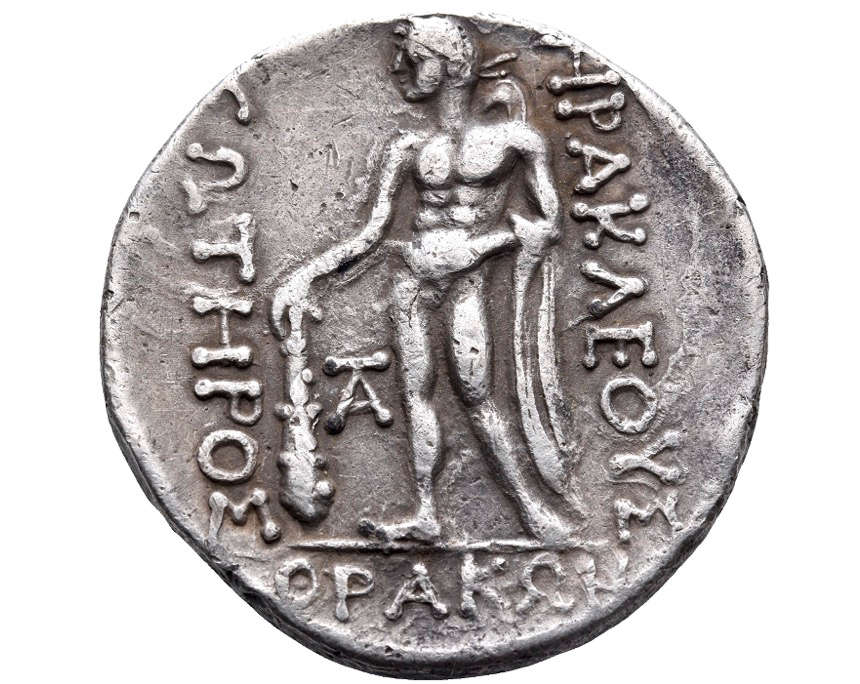Obolos 29
Nomos AG
Obolos 29
Coins
8 October 2023
Online
by Johannes Stelzhammer
You know that summer has ended when the major auction houses start sending you nicely printed catalogues to introduce you to the coins on offer in their top-end autumn auctions. Be prepared – in about two weeks Dr. Alan Walker will present our very own autumn-highlight auctions to you: Nomos 29 and Nomos 30. Brace yourself for some truly spectacular coins!
In the meantime, we did not sit idle in our chairs, waiting for the Nomos catalogues to be delivered by the printer, but put together the 29th edition of our online auction. Obolos is online now and will close on Sunday, 8thof October, starting at 14:00 CEST live on our webpage. This time the sale includes 854 lots, ranging from Celtic to modern coins and seals.
Today I want to draw your attention to some rather special coins from the Greek section of obolos 29. Enjoy!

Lot 85: Islands off Thrace, Thasos. Circa 80-70 BC. Tetradrachm. Rare, and issue of great numismatic interest. Some deposits, otherwise, very fine. Starting Price: 500 CHF.
At a first glance, this silver tetradrachm looks like your typical “ten a penny” issues from the Island of Thasos just off the coast of Thrace. Have a second – closer – look! In the exergue, with a muscled Herakles literally standing on it, and where we would usually expect to read ΘΑΣΙΩN, the issuing authority of this coin has decided to state ΘΡΑΚΩΝ! Thus, referring to the entire people of the Thracians instead of the citizens of Thasos only. This very rare and enigmatic issue was almost certainly minted circa 80-70 BC, during the bloody Mithradatic War, fought out between the fourth King of Pontos of this name and the Roman Republic. The dating has been confirmed in recent studies. However, while it was once believed to have been struck in an uncertain Thracian mint by the king, more recent studies have discovered die-connections with the “regular” ΘΑΣΙΩN issues – minted while Thasos was under control of the Romans. This special edition might have been used to pay the Republic’s Thracian mercenaries!

Lot 170: Boeotia, Thebes. Circa 395-338 BC. Stater, struck under the magistrate Epaminondas, c. 364-362. Light scrape on the obverse, light porosity and deposits on the reverse, otherwise, very fine. Starting Price: 500 CHF.
Struck circa 364-362 BC, this silver stater from Thebes in Boeotia belongs to a series of such coins signed by magistrates of the city. In this case, the legend on the reverse refers to Epaminondas, one of the ancient world’s most celebrated military leaders and statesmen. Under his command, together with their allies the Boeotians defeated the Spartans and established a period of Theban Hegemony in Greece. His premature death on the battlefield of Mantineia in 362 BC cut his promising career short. He left a lasting mark, with – among many others – Xenophon, Cicero, and Montaigne writing about him. Thanks to Pausanias, we know the poem that once graced his grave: By my counsels was Sparta shorn of her glory, and holy Messene received at last her children. By the arms of Thebes was Megalopolis encircled with walls, and all Greece won independence and freedom. (Pausanias, Description of Greece, Vol. 4, Loeb Library, 2nd edition 1965, p. 239-Translated by W.H.S. Jones).

Lot 184: Attica. Athens. 32 BC. Struck during (or shortly after) the visit of Mark Antony and Cleopatra to Athens in the summer of 32 BC. Exceptional for issue. Very fine. Starting Price: 100 CHF.
This humble bronze issue from Athens connects us to one of the most dramatic periods in antiquity. When Antony threw in his lot with Cleopatra VII and eventually divorced Octavia Minor, the sister of Octavian/Augustus, the stage for the final phase in the brutal contest between the two heirs of Julius Caesar was set. Cleopatra, the self-assured queen of Egypt, now expected to receive the same honors previously bestowed by the city of Athens on Octavia as wife of Antony. The citizens of Athens demurred – they rather preferred the virtuous Octavia to the queen. Only in 32 BC when the couple resided in Athens, she finally got what she wanted. This coin can be understood as a low-key public relations scheme initiated by Antony, with Zeus on the obverse referring to Egypt and Dionysos on the reverse to himself, celebrating the new union.





